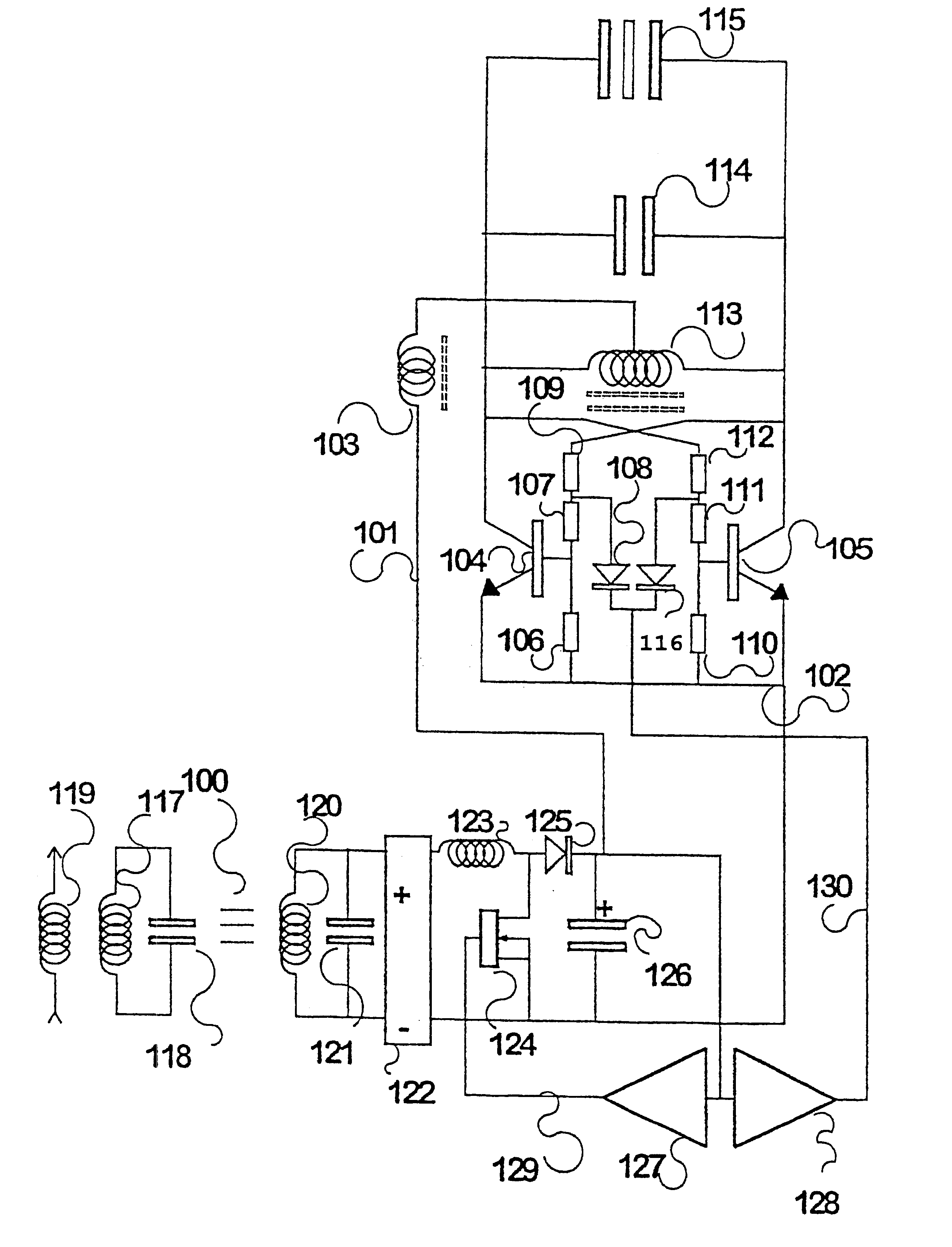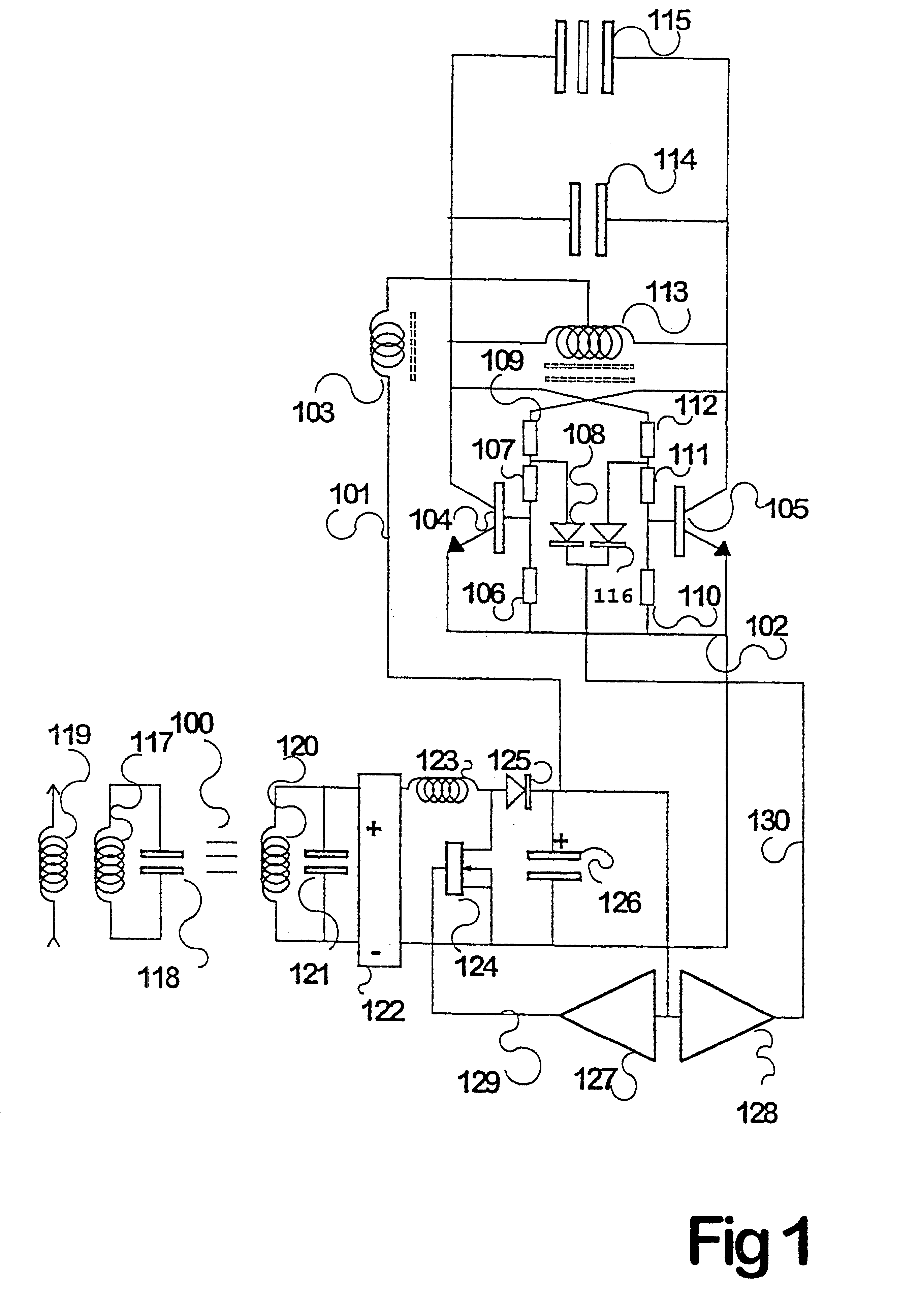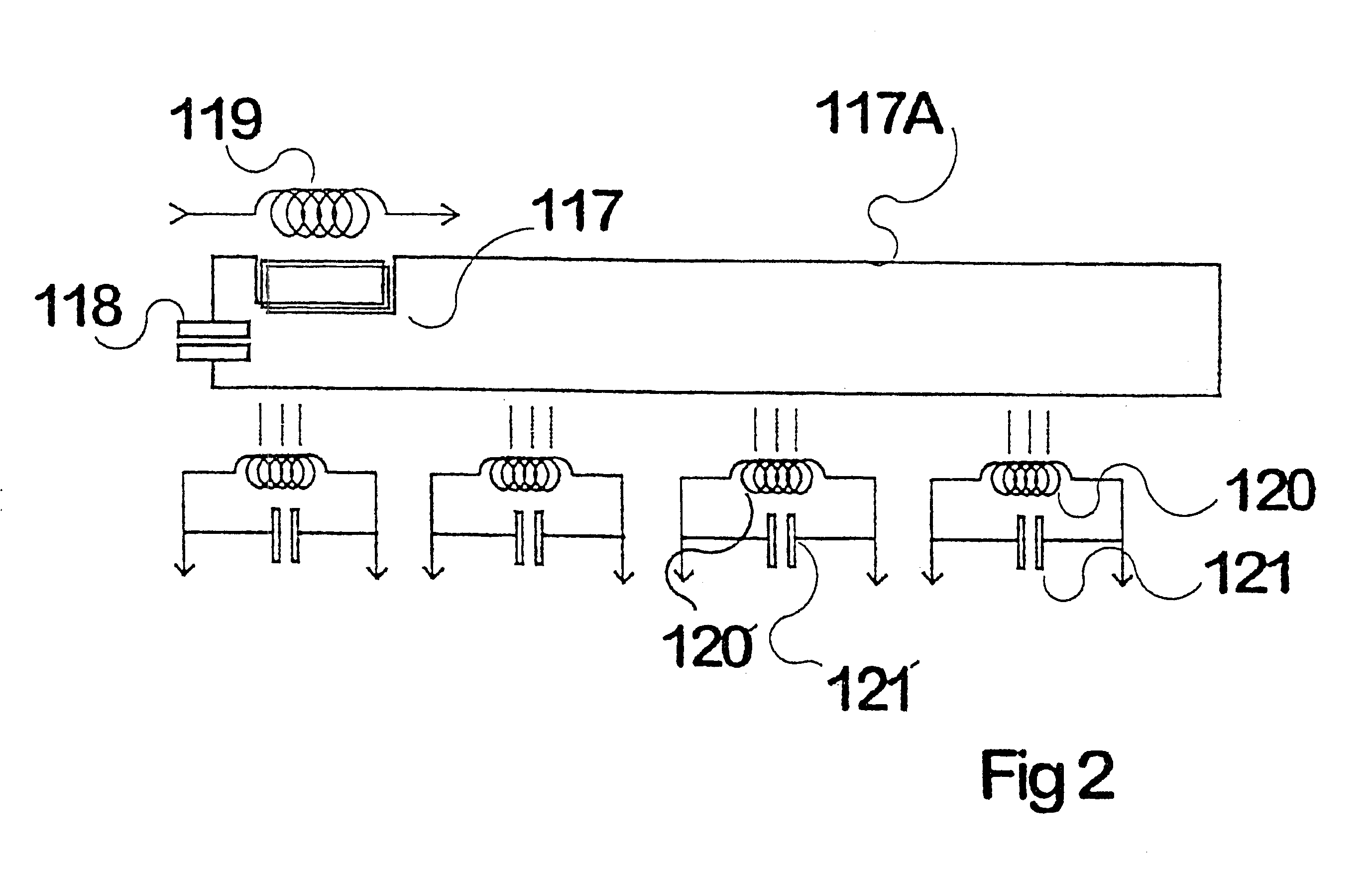Power supply for an electroluminescent display
a technology of power supply and electroluminescent display, which is applied in the direction of inductance, electric variable regulation, rail devices, etc., can solve the problems of difficult driving at an acceptable brightness level, affecting the life of the display, and affecting the operation of the display. , to achieve the effect of increasing the effective distance between the electroluminescent panel and the source of inductive power, enhancing the space and increasing the effective distan
- Summary
- Abstract
- Description
- Claims
- Application Information
AI Technical Summary
Benefits of technology
Problems solved by technology
Method used
Image
Examples
application example 2a
Road Studs
FIG. 3 shows a prior-art view of a road stud (which is a device including a resonant secondary circuit, a control circuit to limit secondary current, and an array of light-emitting diodes intended as a self-lit "cat's eye" type of lane marker), in which the stud 300 is simply glued onto a road surface 303 above a previously cut slit containing primary inductive pathway conductors 304 and 305. Typically, the conductors are spread apart within the space 306 so that the magnetic field surrounding the upper conductor 304 is not partially cancelled out by the reverse field in 305. Inside the road stud there is a pickup inductor 301 (here shown side-on), resonating circuitry, power control and supply circuitry and a bank of light-emitting diodes 302 to provide a useful output.
One problem with this device is that after the road receives each of an often needed re-sealing, the distance over which the inductive field must travel to reach the stud becomes greater and may exceed the ...
application example 2b
Two Road Studs
One road stud close to the primary conductor can act as a intermediate resonant circuit for another road stud; here the intermediate circuit is not a simple passive inductor / capacitor circuit but is controlled by a shorting switch arrangement for decoupling the circuit in the event of too high a circulating voltage. This illustrates use of an intermediate loop incorporating a current limiting feature. Such a feature is useful in permitting primary current to pass an un-loaded intermediate loop and so reach further consuming devices.
application example 3a
Vehicle Powered Through an Intermediate Loop Attached to the Trackway
FIG. 5 shows a vehicle 500, capable for example of running along an arrangement of rails 501, in which an electric motor 509 drives at last one wheel; the motor being fed from a set of motor control circuitry 508 which accepts AC power from a resonant pickup circuit comprised of a capacitor 506 and an inductor 507 preferably having a ferromagnetic core arranged so as to effectively intercept a flux from a supply. The primary conductor 503 running substantially parallel to the track has an intermediate coupling arrangement a loop of wire (preferably a litz wire, because it may carry a high resonating current) including optionally one or more discrete inductances 504 and a tuning capacitor 505. The inductances 504 have two functions; they aid in causing the loop to be electrically resonant at a system-wide resonant frequency, and they act as concentrated sources of inductive fields to be picked up by the vehicle. In ...
PUM
| Property | Measurement | Unit |
|---|---|---|
| capacitance | aaaaa | aaaaa |
| area | aaaaa | aaaaa |
| size | aaaaa | aaaaa |
Abstract
Description
Claims
Application Information
 Login to View More
Login to View More - R&D
- Intellectual Property
- Life Sciences
- Materials
- Tech Scout
- Unparalleled Data Quality
- Higher Quality Content
- 60% Fewer Hallucinations
Browse by: Latest US Patents, China's latest patents, Technical Efficacy Thesaurus, Application Domain, Technology Topic, Popular Technical Reports.
© 2025 PatSnap. All rights reserved.Legal|Privacy policy|Modern Slavery Act Transparency Statement|Sitemap|About US| Contact US: help@patsnap.com



